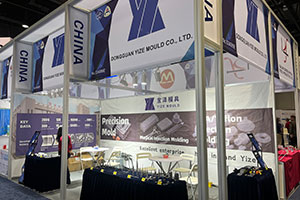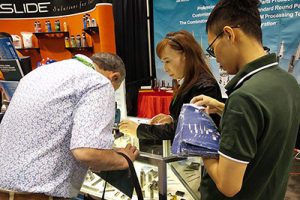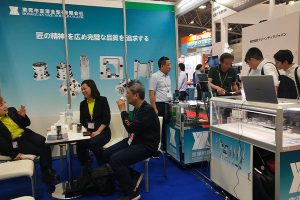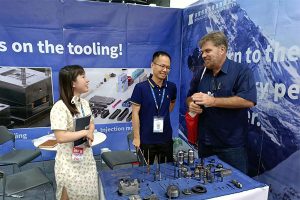Manufacturing of Tungsten Carbide Tool
I. Introduction: Tungsten Carbide Tools – The “Cutting Pioneers” in Manufacturing In the grand landscape of modern manufacturing, cutting processing is akin to a precise “sculpting art,” and tungsten carbide […]
I. Introduction: Tungsten Carbide Tools – The “Cutting Pioneers” in Manufacturing
In the grand landscape of modern manufacturing, cutting processing is akin to a precise “sculpting art,” and tungsten carbide tools are the indispensable “super weapons” in this art. With their excellent properties such as high hardness, high strength, high wear resistance, and high heat resistance, tungsten carbide tools play an irreplaceable and crucial role in numerous fields including mechanical manufacturing, the automotive industry, and aerospace.
So, how exactly is such a high-performance tool born? This article will delve into the manufacturing process of tungsten carbide tools, from material selection to surface treatment, comprehensively unveiling their mysteries and presenting readers with an in-depth exploration journey into the manufacturing of tungsten carbide tools.
Bisnis pabrik kami: suku cadang karbida, suku cadang cetakan, cetakan injeksi medis, cetakan injeksi presisi, cetakan injeksi PFA teflon, alat kelengkapan tabung PFA. email: [email protected],whatsapp:+8613302615729.
II. Material Selection: The Cornerstone of Tool Performance
The first and most crucial step in the manufacturing of tungsten carbide tools is material selection. Tungsten steel, also known as cemented carbide, is a composite material sintered from metal powders such as tungsten carbide (WC) and cobalt (Co) under high temperature and high pressure. This unique combination endows tungsten steel with extremely high hardness and excellent wear resistance, making it an ideal choice for manufacturing high-performance tools.
When selecting tungsten steel materials, it is like tailoring a “battle suit” for the tool. The specific use and working conditions of the tool must be fully considered. For example, in high-speed cutting processing, the tool needs to withstand higher cutting speeds and cutting forces. In this case, tungsten steel materials with higher hardness and better wear resistance should be selected. When working in high-temperature environments, the tool needs to have good heat resistance to avoid failure due to excessive temperature. Only by precisely matching the tool’s use with the material’s properties can the tool perform at its best and have a long service life in actual use.
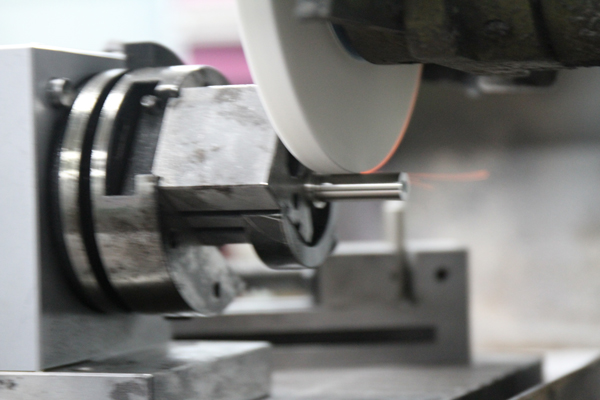
III. Preliminary Processing: The “Magic” of Shaping the Tool’s Prototype
A. Batching and Mixing: A “Chemical Symphony” of Precise Proportions
Based on the performance requirements of the required tool, appropriate tungsten carbide and cobalt powders are carefully selected and batched according to precise proportions. This is similar to a chef’s precise control over ingredients during cooking. Any deviation in proportion may affect the final “taste” of the tool. Subsequently, the batched powders are placed in professional mixing equipment for thorough mixing to ensure uniform distribution of various components, laying a solid foundation for subsequent forming and sintering.
B. Forming: The “Mold Magic” that Gives Life to the Powder
The well-mixed powders are carefully placed into molds. Through methods such as pressing or injection molding, the powders gradually form the preliminary shape of the tool under the combined action of pressure and temperature. The forming process is like a fine sculpture creation, requiring strict control of parameters such as pressure and temperature. Excessive pressure may cause internal stress in the tool, affecting its performance. Temperatures that are too high or too low will affect the fluidity and forming quality of the powders. Only by precisely controlling these parameters can the shape and dimensional accuracy of the tool meet the design requirements.
C. Sintering: The “High-Temperature Inferno” of Powder Transformation
The formed tools are placed in a sintering furnace and sintered under harsh conditions of high temperature and high pressure. During this process, wonderful chemical reactions and physical changes occur between the powder particles, gradually fusing to form dense intermetallic compounds. Sintering temperature and time are key factors affecting tool performance, similar to the control of heat and time during cooking. Excessive temperature may cause the tool to overheat and deform, while too long a time may cause the tool’s grains to grow, reducing its hardness and wear resistance. Therefore, sintering parameters must be carefully adjusted according to specific material and process requirements to produce high-performance tool blanks.
IV. Heat Treatment: The “Song of Fire and Ice” that Tempers Tool Performance
Heat treatment is a core link in the manufacturing process of tungsten carbide tools. It is like a magical wizard that transforms the tool by changing its microstructure and properties, giving it higher hardness and wear resistance. Common heat treatment processes include quenching, tempering, and aging treatment.
A. Quenching: A “Hardness Leap” through Rapid Cooling
The sintered tool is heated to a certain temperature to make its internal structure reach a uniform austenite state, and then it is quickly immersed in a cooling medium such as oil, water, or salt bath for rapid cooling. This process is like a race between speed and passion. Through rapid cooling, the tool gains high hardness and wear resistance, as if it is wearing an impenetrable “armor.” However, parameters such as heating speed and cooling speed during the quenching process must also be strictly controlled. A slight mistake may lead to defects such as cracks and deformation, rendering all previous efforts in vain.
B. Tempering: A “Toughness Harmonization” of Hardness and Softness
Although the quenched tool has extremely high hardness, its brittleness also increases accordingly, similar to a sharp but fragile glass knife. To reduce its brittleness and improve its toughness, tempering treatment is usually required. The quenched tool is heated to an appropriate temperature and held for a certain period of time, and then slowly cooled. The selection of tempering temperature and time needs to be precisely adjusted according to specific material and process requirements, just like a bartender carefully balancing the proportions of a cocktail. Only when it is just right can the tool maintain high hardness while having good toughness and impact resistance.
C. Aging Treatment: The “Time Magic” of Stress Release
Aging treatment is a process of gradually releasing the residual stress inside the tool through long-term natural placement or artificial heating. Residual stress is like a “time bomb” hidden inside the tool. If not eliminated promptly, it may cause problems such as cracks and deformation during the tool’s use, affecting its dimensional stability and service life. Through aging treatment, the tool undergoes a spiritual baptism, with its internal stress released, becoming more stable and reliable, and able to maintain good cutting performance for a long time.
V. Precision Machining: An “Artistic Journey” of Carving Tool Details
Although the heat-treated tungsten carbide tool already has basic performance and shape, it still needs to undergo precision machining to meet higher dimensional accuracy and surface quality requirements. Precision machining mainly includes grinding, polishing, and edge grinding steps, each of which is like carving a fine work of art, requiring craftsmen to have superb skills and a rigorous attitude.
A. Grinding: Precision Polishing to Remove Flaws
The tool is ground using equipment such as a grinding machine, just like a highly skilled sculptor using a chisel to remove excess material, enabling the tool to achieve the required dimensional and shape accuracy. During the grinding process, appropriate abrasives and grinding parameters need to be selected according to the tool’s material and machining requirements. The selection of abrasives is like choosing the right tool, with different abrasives suitable for different materials and machining accuracies. The control of grinding parameters is like grasping the strength and rhythm of sculpting. Only precise control can ensure machining quality and efficiency.
B. Polishing: Surface Beautification to Enhance Appearance
Polishing is a process of smoothing the tool’s surface. It can remove burrs and tiny defects generated during the grinding process, making the tool’s surface as smooth as a mirror, improving its surface quality and aesthetics. Polishing can be carried out by methods such as mechanical polishing or chemical polishing. Mechanical polishing is like sanding a wooden object, making the surface smoother through physical friction. Chemical polishing uses chemical solutions to corrode and dissolve the tool’s surface, achieving a flat and shiny effect. Regardless of the method used, the polishing time and parameters must be strictly controlled to avoid surface damage caused by excessive polishing.
C. Edge Grinding: The Key Touch for Creating Sharpness
Edge grinding is a process of fine machining the tool’s cutting edge, like giving the tool sharp “teeth” so that it can cut materials more easily. During edge grinding, parameters such as the edge grinding angle and edge grinding amount need to be precisely controlled. The size of the edge grinding angle directly affects the tool’s cutting performance and service life. An angle that is too small makes the tool prone to wear, while an angle that is too large increases the cutting force and affects machining efficiency. The control of the edge grinding amount also needs to be just right. Too much will shorten the tool’s service life, while too little will not achieve the ideal cutting effect. Only through careful edge grinding can the tool’s cutting edge be made sharper and more precise, enabling it to exert the best cutting performance.
VI. Surface Treatment: Dressing the Tool in a “Protective Armor”
To improve the wear resistance and corrosion resistance of tungsten carbide tools and extend their service life, surface treatment is often required. Common surface treatment methods include coating, carburizing, and nitriding, each of which is like dressing the tool in a special “protective suit,” endowing it with more powerful properties.
A. Coating: A “Fashionable Outer Layer” of Colorful Protection
Coating is a process of applying one or more layers of special materials on the tool’s surface, which can provide all-around protection for the tool, improving its wear resistance, corrosion resistance, and high-temperature resistance. Common coating materials include titanium nitride (TiN), aluminum oxide (Al2O3), and silicon carbide (SiC), which are like different colored pigments, adding unique colors and properties to the tool. The coating process is like giving the tool a fashionable makeover. By precisely controlling the thickness and uniformity of the coating, the tool can have both a beautiful appearance and better cutting performance.
B. Carburizing: Deep Penetration for Surface Strengthening
Carburizing is a chemical heat treatment process that infiltrates carbon elements into the tool’s surface. It is like injecting a powerful energy into the tool’s surface, improving its surface hardness and wear resistance. During the carburizing process, parameters such as carburizing temperature and time need to be strictly controlled to ensure that carbon elements can uniformly infiltrate the tool’s surface, forming a high-hardness carburized layer. The carburized layer is like a sturdy shield on the tool’s surface, effectively resisting wear and impact during the cutting process and extending the tool’s service life.
C. Nitriding: A Chemical Reaction for Hard Protective Coating
Nitriding is a process in which the tool’s surface reacts chemically with nitrogen elements under certain temperature and atmospheric conditions to form a nitride layer. The nitride layer is like coating the tool’s surface with a hard ceramic film, improving its surface hardness and wear resistance while having certain corrosion resistance. During nitriding, parameters such as nitriding temperature, atmosphere, and time need to be precisely controlled to ensure that the nitriding reaction can proceed fully and form a high-quality nitride layer. After nitriding treatment, the tool is like wearing an invisible protective suit, maintaining excellent performance in harsh working environments.
VII. Conclusion: Striving for Perfection to Forge Tool Glory
The manufacturing process of tungsten carbide tools is a complex and precise systematic project, involving multiple links such as material selection, preliminary processing, heat treatment, precision machining, and surface treatment. Each link is like a small part in a precision instrument, interacting and influencing each other, jointly determining the performance and quality of the final product.
With the continuous development of the manufacturing industry and the continuous progress of technology, the manufacturing process of tungsten carbide tools is also constantly innovating and optimizing. From the research and development of new materials to the application of advanced machining technologies, from the construction of intelligent production lines to the promotion of green manufacturing concepts, each progress has injected new vitality into the development of tungsten carbide tools. In the future, we have reason to believe that tungsten carbide tools will play a greater role in a wider range of fields and contribute to promoting the high-quality development of the manufacturing industry. Let us look forward to an even more glorious tomorrow for the manufacturing process of tungsten carbide tools!



